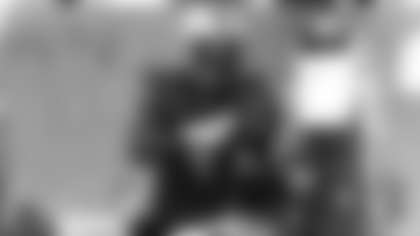
Paul "Rocky" Rochester, one of the unsung but important defensive contributors to the Jets' Super Bowl III triumph over the Baltimore Colts in January 1969, died Sunday with his family around him. He was 81.
Rochester was born in Lansing, MI, grew up in Floral Park on Long Island, attended Sewanhaka HS there, then took his football and lacrosse prowess with him back to Michigan State. He entered pro football as an undrafted free agent with the Dallas Texans of the then new American Football League in 1960 and spent his first three-plus seasons with the franchise that would become the Kansas City Chiefs.
He was released by KC on Nov. 12, 1963 and was immediately signed by the Jets. Nine days after the assassination of President John F. Kennedy, he played in his first game in green and white, at Shea Stadium against the Chiefs, and contributed to a 17-0 Jets shutout. From there it was on to his final six-plus seasons in the pros, all of it spent in the AFL — making Rocky one of a mere 20 players (five of them Jets/Titans) who played in all 10 of the AFL's seasons before the merger with the NFL.
Rochester, wearing uniform No. 72, was the Jets' full-time starter at left defensive tackle beginning in 1964. He remembered early on that then-DL coach Walt Michaels "took me aside and told me what he expected of me, to work tackle-end games with Gerry Philbin. And be a team leader."
Rochester remained the LDT starter through the Super Bowl season of 1968, including of course Super Bowl III at the Orange Bowl on Jan. 12, 1969.
Frank Ramos, the Jets' longtime public relations director who actually was a high school classmate of Rochester's, recalled how his friend and "a truly great guy" helped the Jets defense over that span.
"Paul was an underrated defensive tackle who played a major role on the Jets' Super Bowl championship team," Ramos said. "He was a great run stopper who enabled defensive ends Gerry Philbin and Verlon Biggs to rush from the outside and John Elliott, the quick defensive tackle, to rush up the middle. Walt Michaels came up with a scheme to use undersized linebacker Carl McAdams at DT on passing downs, leading the 1968 Jets to have the number one defense in the AFL."
Rochester rotated with Steve Thompson at LDT in 1969 through the playoff game against, yes, the Chiefs again. Then he retired from football and headed south. He and his business, Paul Rochester and Associates, sold building and roofing materials in Florida, Georgia and Alabama and also sold real estate.
And he made his way back to the New York metro area every once in a while, such as when the Jets brought everyone back to MetLife Stadium in 2018 to celebrate the 50th anniversary of the Super Bowl triumph.
"I was able to bring my children, their mates and my grandchildren to the celebration," Rochester told newyorkjets.com's Jim Gehman in his story on Rocky that ran on April 9, two months before his passing. "We had a great time telling stories about the good old days. I love New York's fans. It was like going home."
Rochester and his wife, Nancy, recently celebrated their 60th anniversary at their home in Jacksonville, FL. He is also survived by his two children, Laurel Nielsen and Don, and two grandchildren.














